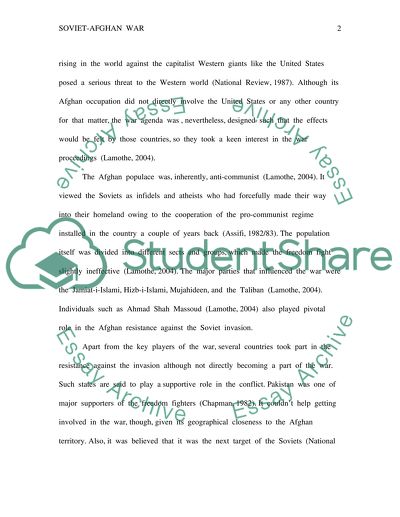Cite this document
(“The elements of a conflict of the Soviet-Afghan war Research Paper”, n.d.)
Retrieved from https://studentshare.org/history/1428147-the-elements-of-a-conflict-of-the-soviet-afghan-war
Retrieved from https://studentshare.org/history/1428147-the-elements-of-a-conflict-of-the-soviet-afghan-war
(The Elements of a Conflict of the Soviet-Afghan War Research Paper)
https://studentshare.org/history/1428147-the-elements-of-a-conflict-of-the-soviet-afghan-war.
https://studentshare.org/history/1428147-the-elements-of-a-conflict-of-the-soviet-afghan-war.
“The Elements of a Conflict of the Soviet-Afghan War Research Paper”, n.d. https://studentshare.org/history/1428147-the-elements-of-a-conflict-of-the-soviet-afghan-war.


